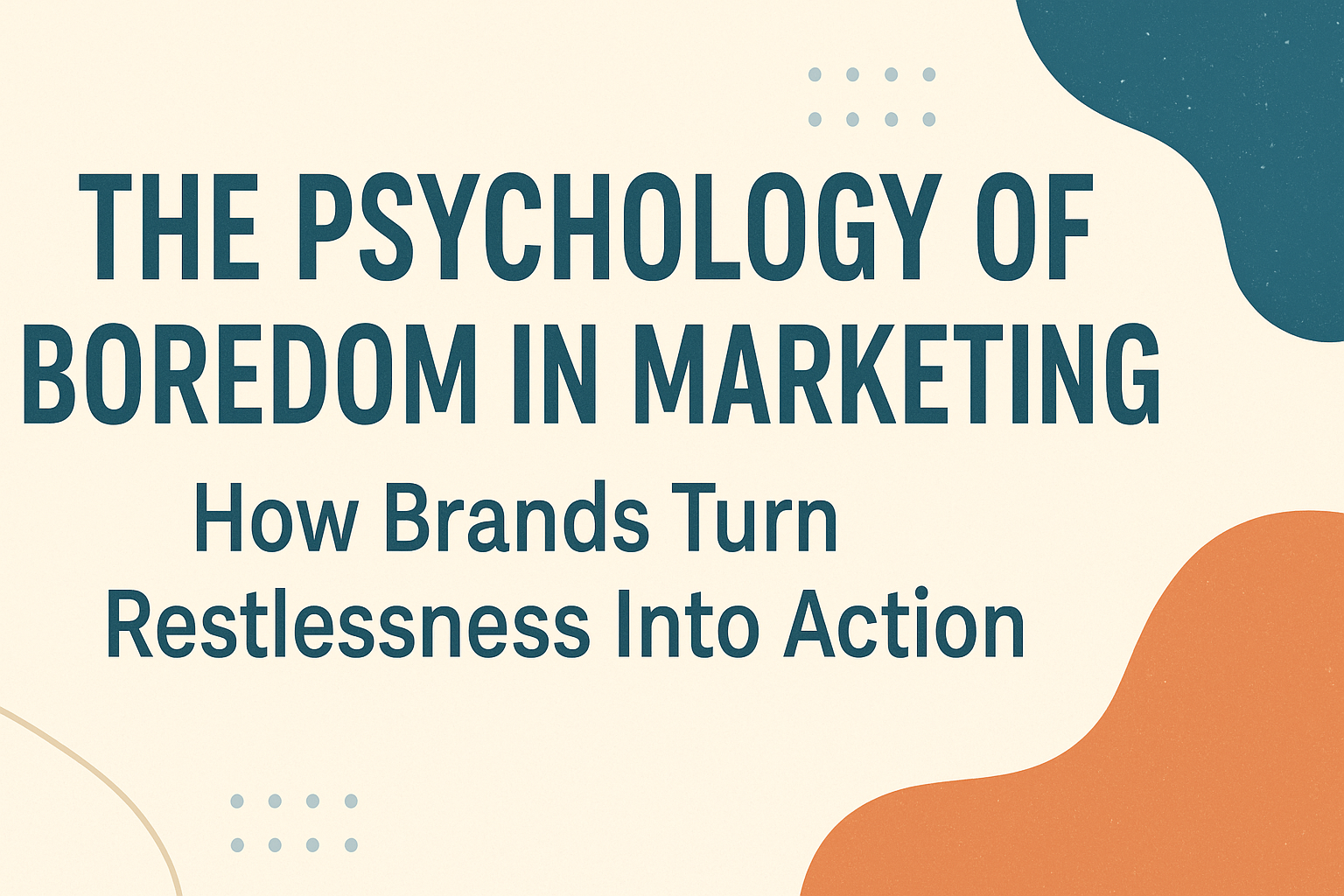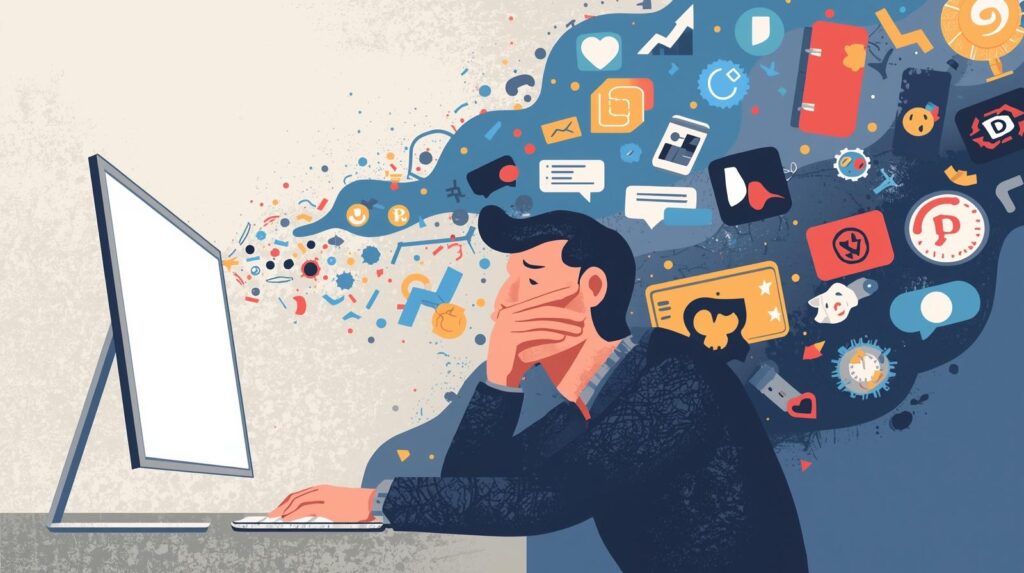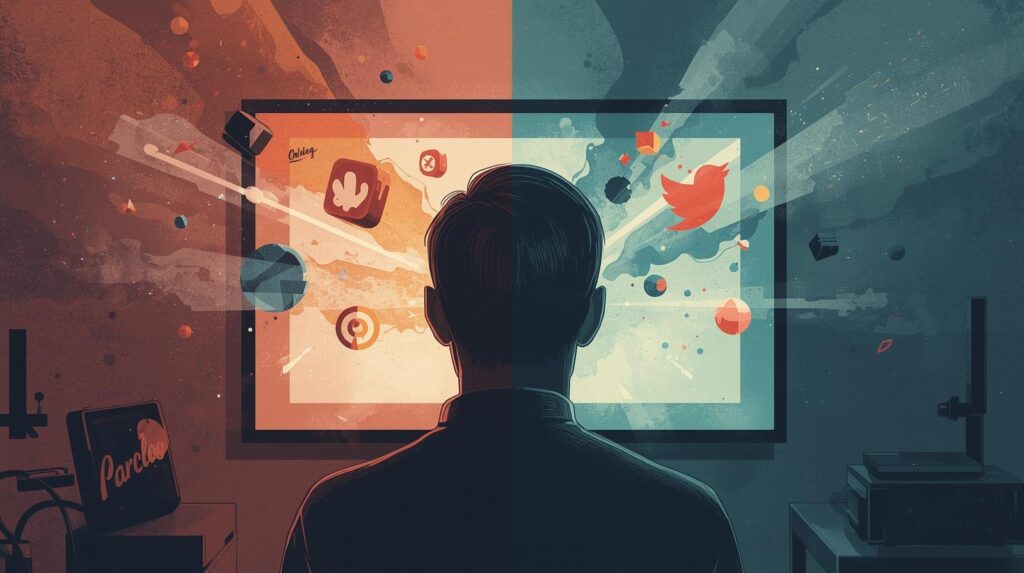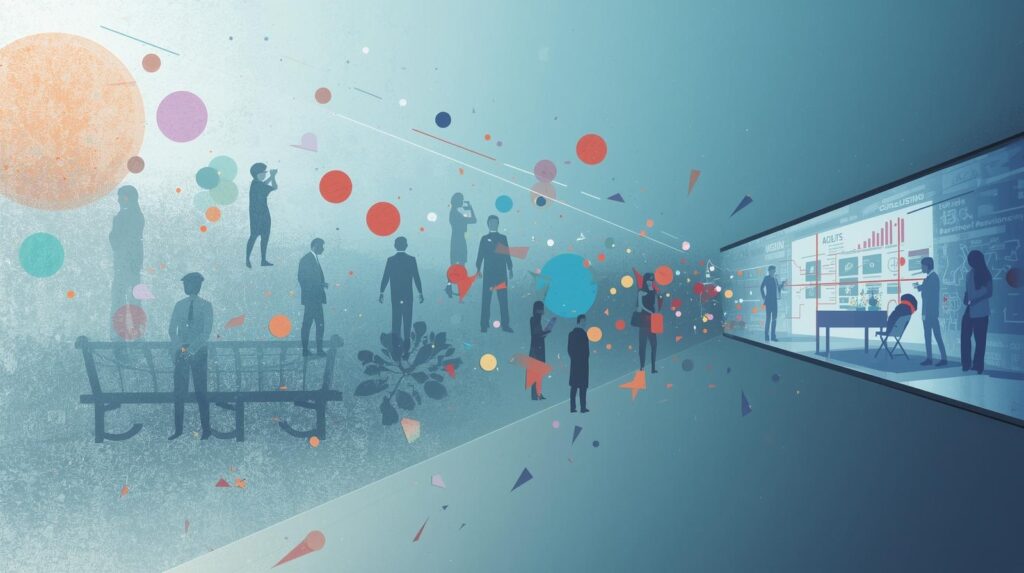Turning Restless Minds
The Psychology of Boredom in Marketing: How Brands Turn Restlessness Into Action
Boredom drives engagement cleverly
Marked Communications | 10-11-2025

Table of Contents
The Psychology of Boredom in Marketing: How Brands Turn Restlessness Into Action
We’ve all been there. You scroll through your phone for the tenth time in an hour out of habit without any particular thing you’re looking for. Your mind wanders during a meeting. You open the fridge even though you’re not hungry. That restlessness seeping in? That’s boredom, and marketers know precisely how to use it.
Boredom isn’t just an empty feeling we try to escape. In fact, it is the influential mental state that dictates what we buy, what brands we remember, and ways in which we use our time and money. This understanding of the link between boredom and consumer behavior has become one of the most valuable tools in modern marketing.
What Boredom Really Means

Before we get into the world of marketing, let’s understand what boredom actually is. Psychologists describe it as a state where we feel stuck between wanting stimulation and not finding anything interesting enough to hold our attention. It is like being hungry but finding nothing appealing in the pantry.
Research has shown that boredom actually does serve a purpose. It is how our brains signal to us that what we are currently doing is not meaningful or engaging enough. This feeling of discomfort drives us toward looking for something new, different-perhaps something that evokes a feeling of aliveness again.
This is where it gets interesting for brands. When people are bored, they become seekers. They start looking for anything that can break the monotony, and they’re more open to trying new things than they would be otherwise.
The Boredom-Buying Connection
Have you ever purchased anything online simply because you were bored? You’re not alone. Research shows that one of the biggest triggers for impulsive buys is boredom. Once our brains are not preoccupied, we usually seek ways to fill this void with shopping.
Think about the late-night online shopping sessions. The combination of boredom, easy access to shopping apps, and the promise of instant gratification creates a perfect storm for consumer spending. That brief excitement of finding something new, adding it to cart, and finishing up the purchase gives us a dopamine hit that temporarily fills the void left by boredom.
Social media has absolutely strengthened that bond. Places like Instagram and TikTok have made the casual browse into shopping experiences. You’re scrolling due to boredom, and then you see a product that catches your eye. Two clicks later, it’s ordered. The line between entertainment and commerce has completely blurred.
How Brands Use Boredom to Their Advantage
Smart companies don’t wait for a bored consumer to bump into the experience with their product; rather, they actively design experiences tapping into boredom as a motivator.
Just consider mobile games: these apps intuitively know that people download their games during boring moments, such as waiting in line, on commutes, or through commercial breaks. They are all designed for quick engagement and can easily be picked up and put down. Most successful games also introduce shopping elements, knowing full well that bored players might spend money on upgrades or virtual items to create some excitement.
Fast fashion brands have also mastered this. With new collections and limited-time offers constantly up for grabs, there’s this feeling that something is always new. For anyone who feels bored with their wardrobe, these brands make life so easy. The frequency of changes makes the customers return, afraid they will miss something.
Streaming services do things a bit differently. They understand that people often scroll through because they’re bored and can’t decide on what to watch. Their features of autoplay and personalized recommendations work to keep them entertained, turning that initial boredom into hours of viewing. They’ve positioned themselves as cures for boredom.
Creating Anti-Boredom Content
The most successful marketing campaigns of today are those that are genuinely entertaining or surprising. Brands seem to have learned that boring ads get ignored, especially when people are already bored and looking for stimulation.
This is why brands create content that isn’t always about direct selling of products.
They create short films, podcast sponsorships, interactive experiences, and social media challenges. The goal is to be interesting enough that bored people will actually seek out the brand’s content, not just tolerate it.
Humor, in particular, works wonders in this respect. Funny ads are shared, remembered, and talked about. When people are bored, they’re more willing to interact with something that will make them laugh. Brands like Wendy’s have built entire social media strategies around witty, entertaining content that barely mentions their products but keeps people engaged and thinking about the brand.
Mystery and suspense also counteract boredom. Teaser campaigns that slowly reveal information keep people checking back. Apple has perfected this with their product launches, where anticipation is built up by cryptic invitations and staged reveals, turning the bored technology enthusiast into an avid follower.
The Dark Side of Boredom Marketing

While understanding boredom would help brands connect with audiences, there’s also a concerning side to this psychology: some companies deliberately design experiences to be boring on purpose because they know that’ll drive more engagement with their platforms.
Social media algorithms are designed both to avoid boredom and to generate a fear of missing out. The infinite scroll means there is always something new; users learn to continually check in, even when they’re not especially interested. This reinforces what some researchers have termed “manufactured boredom”-the feeling whereby people are bored without these platforms but somehow empty with them.
Sometimes, gaming firms employ strategic boredom. Free-to-play games have waiting points where progress slows down and, subsequently, generates boredom that can be eliminated if the player makes a purchase. It is a purposeful point of friction meant to convert bored players into paying ones.
These are all fundamentally manipulative tactics, and indeed, they raise ethical questions of when an understanding of consumer psychology becomes exploitation. This is all the more pressing as boredom marketing becomes increasingly sophisticated.
What This Means for the Future
As our attention spans fragment and boredom becomes more common in our overstimulated world, brands will continue refining their approaches. We’re likely to see more interactive experiences, more personalized content, and more attempts to position products as solutions to boredom.
Virtual and augmented reality extend new frontiers of anti-boredom marketing. These technologies promise fully immersive experiences that could change the way we interact with brands during moments of idleness.
But there’s also a growing counter-movement: some consumers are realizing how boredom is being used against them and deliberately disconnecting. Brands that recognize this and offer meaningful engagement rather than distraction might find themselves ahead of the curve.
The link between boredom and marketing will not go away. Boredom is an inherently human emotion, and for as long as people feel listless and understimulated, marketers will continue to find ways to position their products as the solution. The brands that will thrive are those that recognize a distinction between filling a legitimate need versus exploiting a psychologically fragile state of mind.
For consumers, awareness is power. Being more cognizant of when boredom is driving your decisions helps enable better intentionality about what you purchase and which brands should have your attention. That restless feeling might be trying to tell you something, but the answer isn’t always found in a shopping cart.

FAQs
1. Why do I shop more when I am bored?
Shopping triggers the release of dopamine in your brain, elevating your mood for the time being. If you are bored, your brain is seeking activity, and this makes you more vulnerable to impulsive purchases. Browsing, finding something new, and making a purchase provide the activity that your brain is craving, even if satisfaction is short-lived.
2. How can I prevent impulsive shopping when bored?
Recognize your boredom patterns and create alternative activities that provide a similar stimulation without spending money. Try calling a friend, going for a walk, or working on a hobby. If you must browse, make a rule to wait 24 hours before buying anything non-essential. Delete shopping apps from your phone’s home screen to add friction to the impulse.
3. Does boredom-driven shopping happen across all demographics equally?
Research shows that the younger generation of consumers-particularly 18- to 34-year-olds-are most vulnerable to boredom-driven purchases, partly because of higher social media use and dependence on smartphones. Yet, most people suffer from it to one extent or another. Whereas the specific triggers and favored shopping categories may be different for each age bracket, the deeper psychology resonates with most.
4. Are brands really designing products to combat boredom intentionally?
Yes, many companies are explicitly considering boredom in product development and marketing. For any app, streaming service, or social media platform out there, there are teams of psychologists and behavioral scientists employed to understand and address user boredom. That is not always manipulative; sometimes, it simply comes down to truly creating better, more engaging experiences.
5. Is feeling bored actually bad for me?
Not necessarily. Boredom is productive if it encourages you to find meaningful activities or if it signals that a change in life is necessary. The problem starts when you constantly fill boredom with consumption rather than investigating its underlying cause. According to some psychologists, moderate boredom boosts creativity and self-reflection-if you resist the temptation to distract yourself immediately.
Do you want to start your project now?

